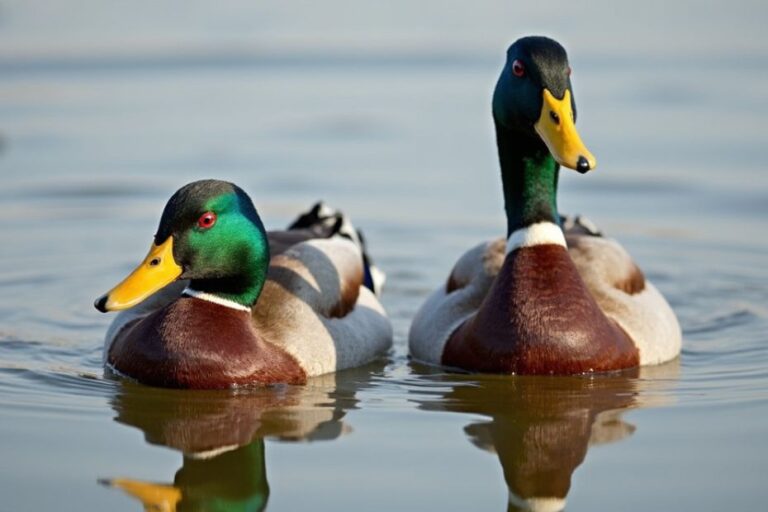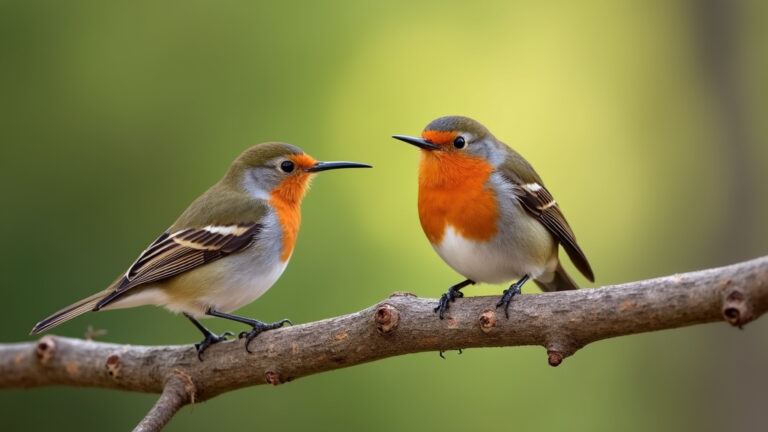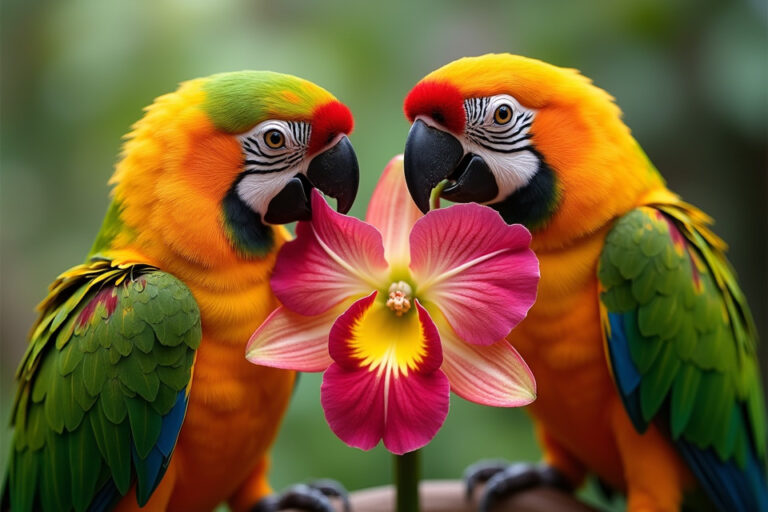How to Report a Rare Bird Sighting: An Ultimate Guide
In this comprehensive guide, I’ll walk you through every step of reporting a rare bird sighting. From the initial heart-pounding moment of identification to navigating the intricacies of submission to official committees, we’ll cover it all.
This isn’t just about procedure; it’s about transforming your passion for birding into meaningful contributions to ornithology and conservation.
Table of Contents
Introduction: The Magic of Unexpected Feathers
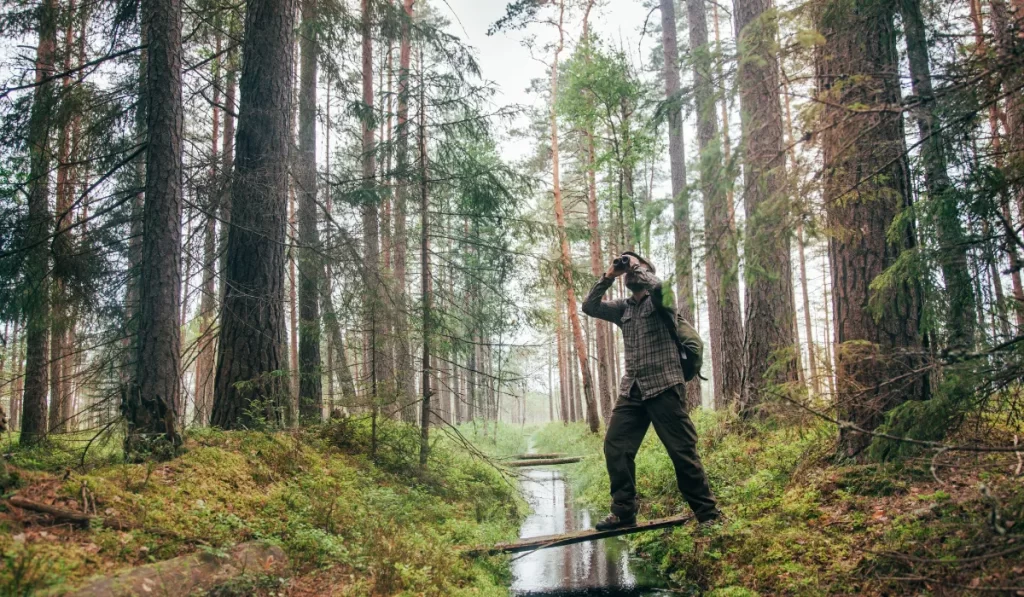
I remember my first such encounter vividly. It was a crisp autumn morning in my hometown in Michigan. As I scanned the trees in my local park, a streak of brilliant blue caught my eye. At first, I thought it was a Blue Jay, a common sight.
But as I focused my binoculars, my breath caught in my throat. The bird’s deep azure plumage, accented with bold black and white patterns, was unmistakable—a Mountain Bluebird, a species typically found in the western United States, over a thousand miles away.
That moment changed my birding life forever. Not only was I thrilled by the sighting itself, but I also learned the importance of properly reporting it. You see, a rare bird sighting isn’t just a personal triumph to add to your life list.
When documented and reported correctly, it becomes a valuable piece of data that contributes to our understanding of bird populations, migration patterns, and the complex interplay between birds and their ever-changing environment.
Why Your Rare Bird Sighting Matters More Than You Think
Before we dive into the how-to’s, let’s talk about why reporting a rare bird sighting is so crucial. It’s not just about bragging rights at your local Audubon meeting (although, let’s be honest, that’s pretty satisfying too).
Your observation, when properly documented and submitted, becomes a data point in a vast, ongoing study of bird life—a study that has far-reaching implications.
The Art and Science of Bird Identification
Now that you understand the far-reaching impact of your rare bird sighting, let’s tackle the first and most critical step: correctly identifying the bird. This is where the art and science of birding converge. You’ll need keen observation skills, a methodical approach, and sometimes, a good dose of humility.
I learned this lesson the hard way early in my birding career. On a spring migration trip to Ohio’s famous Magee Marsh, I thought I’d hit the jackpot—an Arctic Warbler, an Asian species that would be a mind-blowing rarity in the eastern U.S.
I was so convinced that I immediately started calling other birders over. You can imagine my embarrassment when a more experienced birder gently pointed out that I was looking at a leucistic Yellow-rumped Warbler—a common species with an unusual white plumage variation.
That experience taught me to be thorough, to check and double-check before crying “rare bird.” Here’s how you can avoid my rookie mistake:
Use Multiple Field Guides
Never rely on a single field guide. Different guides have different strengths—some excel in illustrations, others in detailing regional variations or vocalization descriptions. I always carry at least three:
- “The Sibley Guide to Birds” for its comprehensive plumage variations
- “Peterson Field Guide to Birds” for its iconic arrow system pointing out key field marks
- A region-specific guide (like “Birds of Florida” when I’m in the Sunshine State)
When I spotted that Thick-billed Vireo in Florida—a Caribbean species seldom seen in the U.S.—I cross-referenced all three guides.
Sibley’s detailed beak illustrations, Peterson’s arrow pointing to the vireo’s distinctive spectacles, and the Florida guide’s notes on the species’ occasional appearances on the state’s southern coast all helped confirm my ID.
Focus on Key Field Marks
Birds have diagnostic features called field marks—unique characteristics that distinguish them from similar species. These can be color patterns, wing bars, eye rings, bill shapes, or even the way they hold their tails.
“Don’t try to absorb the whole bird at once,” advises Dr. Julie Weiss, an ornithologist renowned for her work in bird identification. “Instead, focus on three to four standout features. For a Blackburnian Warbler, for example, you’d key in on the fiery orange throat, black cheek patch, and large white wing patch.”
This technique served me well in Arizona’s Madera Canyon. There, among a flock of Yellow-rumped Warblers, I noticed one bird that just looked “off.”
Focusing on key field marks—a yellow rump but with bold white wingbars, a streaked back, and distinctively yellow sides—I realized I was seeing an Audubon’s Warbler.
This western subspecies (or separate species, depending on who you ask) is rare in Southeast Arizona, making it a noteworthy sighting.
Consider Age, Sex, and Season
Many bird species look radically different depending on age, sex, and time of year. A male American Goldfinch in summer is a brilliant yellow, but in winter, he’s a drab olive. Juvenile birds often bear little resemblance to their parents.
I learned this complexity during a fall trip to Cape May, New Jersey. Scanning a mixed flock of sandpipers, I saw one that looked unusual—larger and grayer than the others, with a distinctly drooping bill.
My initial thought was a mega-rarity: a Great Knot from Asia. But as I studied it more, comparing it to guide illustrations of birds in non-breeding plumage, I correctly identified it as a Red Knot in its less familiar winter outfit.
Another time, in my Michigan backyard, I nearly mistook a juvenile Rose-breasted Grosbeak for a rare Black-headed Grosbeak.
The streaky brown plumage and heavy bill were similar, but careful observation of the wing pattern and a faint rosy tinge on the chest helped me avoid an embarrassing misidentification.
Listen and Record
Birds aren’t just visual creatures; their songs and calls are often as distinctive as their plumage. In fact, in dense forests or during migration when birds are less likely to pose for perfect views, sound can be your most reliable identification tool.
“I can’t stress enough how important auditory identification is,” says Nathan Harris, a sound recordist for the Cornell Lab of Ornithology. “There are birds I’ve documented hundreds of times but rarely seen—like the elusive Black Rail, whose call is far more recognizable than its appearance.”
Apps like Merlin Bird ID and eBird have extensive libraries of bird vocalizations. I always have these loaded on my phone.
During a dawn chorus in the Great Smoky Mountains, I heard an unfamiliar, buzzy “zeee-zeee-zeee-zooo.” Using Merlin’s sound ID feature, I was able to identify and then visually confirm a Golden-winged Warbler—a species in steep decline and a significant find for the region.
Document, Document, Document
In the age of smartphones, there’s no excuse not to visually document your sighting. Even a blurry photo or shaky video can capture field marks, proportions, and behavior that help with identification. Try to get shots from multiple angles—top, side, front—as each view can reveal different features.
But don’t neglect traditional methods. Field sketching is a time-honored birding technique that sharpens your observational skills. “When you draw a bird, you’re not just noting colors but truly seeing its structure—the curve of the beak, the length of the tail, the posture,” explains Julie Zickefoose, a renowned bird artist and naturalist.
During a pelagic trip off the coast of Maine, sea conditions were too rough for steady photos. When a Manx Shearwater—rare for the area—zipped by, I had to rely on quick sketches.
I jotted down its key features: tube-shaped nostrils, dark upperparts contrasting with white underparts, and its distinctive stiff-winged flight style. Those sketches, combined with written notes, were sufficient for experts to verify my sighting.
Embrace Technology (But Don’t Fully Rely on It)
We live in a golden age of birding technology. Apps like Merlin Bird ID can suggest identifications from photos or sounds. eBird’s rarities filter alerts you to species unusual for your location. These tools are fantastic aids, but they’re not infallible.
“AI and databases are incredible resources, but they can’t replace human judgment,” cautions Dr. Tom Rodriguez, a computer scientist working on bird identification algorithms. “These systems make predictions based on patterns in their training data. If a truly out-of-range bird appears, the AI might misclassify it as a more expected species.”
I experienced this firsthand in Texas. An app identified a bird in my backyard as a Northern Cardinal—reasonable, as they’re common here. But something seemed off. Upon closer inspection, I realized it was a Pyrrhuloxia, the cardinal’s desert-dwelling cousin, wandering far east of its range. Had I blindly trusted the app, I’d have missed a significant sighting.
Consult the Community
Birding doesn’t have to be a solitary pursuit, especially when dealing with a potential rarity. Other birders can provide invaluable second opinions, challenge your assumptions, or catch details you’ve missed.
Local birding clubs, Facebook groups, and WhatsApp chats are great for real-time consultations. When I posted my Thick-billed Vireo photos on the “Florida Birds” Facebook page, I received confirming responses from three seasoned ornithologists within an hour. Their expertise boosted my confidence before I submitted official reports.
Sometimes, the community’s input is humbling. When I excitedly shared a “first state record” Yellow-green Vireo sighting in an Ohio birding group, more experienced members gently pointed out field marks indicating it was actually a bright Philadelphia Vireo.
While my ego was bruised, I was grateful for the learning opportunity. In birding, being wrong is often the best way to get better.
Read More: How Do Birds Survive in the Desert?
Report a Rare Bird Sighting: From Sighting to Science
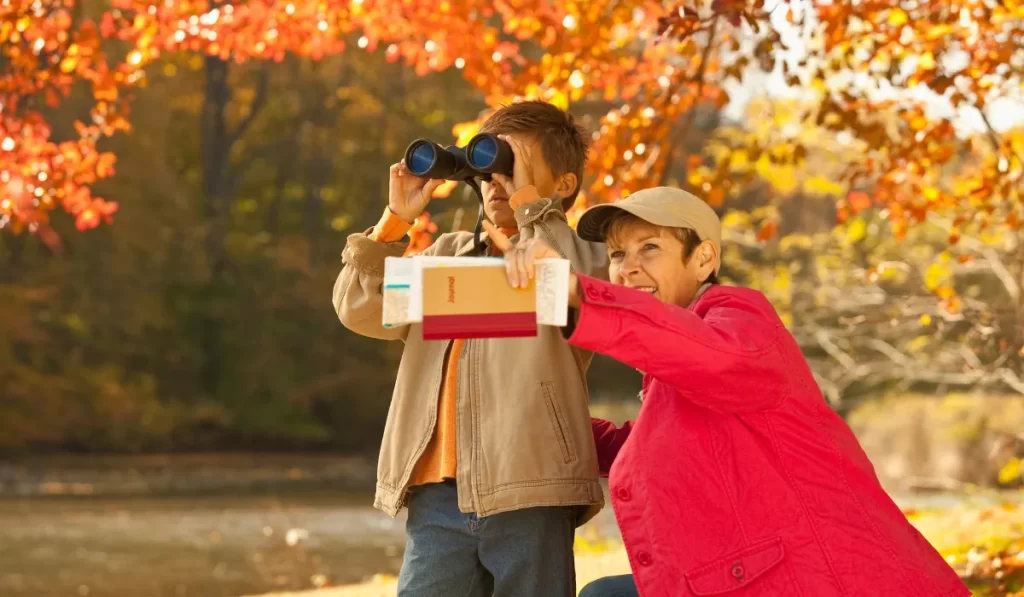
Think of this as building a case. You’re not just claiming you saw something unusual; you’re presenting evidence that will stand up to expert scrutiny.
Your goal is to provide enough detailed, accurate information that someone who wasn’t there can visualize your experience and, ideally, arrive at the same identification.
Begin with Location—Be Precise
Gone are the days when you could report a rare bird sighting with vague descriptions like “near the big oak by Willow Creek.” In today’s data-driven world, precision is key. Most smartphones have GPS capabilities, and apps like eBird can automatically record your exact coordinates.
“Precise location data is critical,” emphasizes Dr. Samantha Lee of the U.S. Geological Survey. “It allows us to correlate bird sightings with specific habitat types, climate zones, and even factors like proximity to urban areas or agricultural land. This helps us understand why a species might be appearing outside its typical range.”
If you’re without GPS, make detailed notes: “500 meters north of the Willow Creek Bridge on Highway 43, adjacent to a flooded soybean field.” When other birders used my descriptions to find and confirm my Barnacle Goose, it solidified the sighting’s credibility.
Note Date, Time, and Duration
The date of your sighting is crucial. It helps ornithologists track migration timing, breeding seasons, and any shifts that might be occurring. “We’re seeing some species migrate earlier in spring and later in fall,” says Dr. Tom Grey, who studies phenology—the timing of natural events.
Time of day also matters. A nocturnal species like a Common Poorwill seen at midday might suggest displacement or health issues. Duration is important too—a brief flyover implies different things than a bird observed foraging for hours.
Describe the Habitat in Detail
Be as descriptive as possible: “Dense willow thickets along a slow-moving stream, with scattered cottonwoods and a marshy understory dominated by skunk cabbage.” Such details help ecologists understand what might attract a bird to an unusual area.
Record Weather Conditions
Weather plays a huge role in bird movements, especially for rarities. Strong winds, storms, or temperature extremes can push birds far off course. Note the weather during your sighting and, if possible, in the preceding days.
Document Behavior in Detail
A bird’s behavior provides valuable clues about its condition and how it came to be in an unexpected place. Is it feeding actively? Interacting with other birds? Does it seem disoriented?
“Behavioral notes are gold,” states Dr. Emily Chan, an expert in avian ethology. “A Scissor-tailed Flycatcher confidently hawking insects over a Minnesota prairie suggests a bird that’s found a suitable habitat, not just a wind-blown stray. In contrast, a Tropical Kingbird huddled in a Maine hedgerow, fluffed up and lethargic, likely indicates a bird in distress.”
Use Media Effectively
In our digital age, visual and audio documentation is expected. But it’s not just about having media; it’s about using it effectively.
- Photos: Include a variety of shots—close-ups for field marks, wider angles for habitat, flight shots for wing patterns. In my Thick-billed Vireo report, I provided a close-up showing its stout bill, a side profile highlighting its mask, and a wider shot showing its foraging behavior in the hardwood hammock.
- Videos: Even short clips can capture behavior, flight style, and interactions. My 30-second video of the Barnacle Goose in Montana showed its distinctive waddling gait and how it held its head higher than nearby Canada Geese.
- Audio: Vocalizations are often species-specific. That scratchy “pit-tuck” call I recorded of the Black-throated Gray Warbler in Illinois? It clinched the ID, being markedly different from similar eastern warblers.
Label your media clearly: “Image 1: Thick-billed Vireo, showing heavy bill and dark lores. St. Marks NWR, Florida, 10/15/2023, 8:15 am.” This precision helps reviewers quickly understand what each file contributes to your case.
Keep a Personal Journal
Beyond your official report, maintain a birding journal. Here, you can record your initial reactions, uncertainties, and the journey to identification. While subjective, these notes can offer valuable context.
Submitting Your Report: Navigating the Birding Bureaucracy
You’ve identified your rare bird, meticulously documented your sighting, and compiled a thorough report. Now comes a step that intimidates many birders: submitting your findings through official channels.
The world of rare bird reporting has its own institutions and protocols—a “birding bureaucracy” that ensures records are vetted, validated, and properly archived.
Don’t be daunted. This process, while formal, is designed to maintain the integrity of ornithological data. Every expert whose work you admire, from Roger Tory Peterson to David Sibley, has navigated these same channels. Your submission doesn’t just add a checkmark to your life list; it becomes part of our collective scientific record.
Start with eBird: The Digital Gateway
In today’s interconnected world, eBird (operated by Cornell Lab of Ornithology) has become the go-to platform for bird sightings. It’s more than a listing app; it’s a global database used by researchers worldwide.
“eBird has revolutionized how we collect and analyze bird data,” says Dr. John Smith of Cornell. “Its user-friendly interface encourages broad participation, while its rigorous data standards maintain scientific integrity. For rare birds, it’s often the first point of entry.”
To report your rarity on eBird:
- Log in or create an account
- Click “Submit Observations”
- Select your location (be as precise as possible)
- Enter your rare bird species
- Provide count (even if it’s just one)
- Add date and time
- Under “Details,” note age, sex, and behavior
- Upload photos, videos, or audio
- In comments, describe habitat, weather, interactions
When I submitted my Thick-billed Vireo sighting, eBird’s system immediately flagged it as unusual for Florida. Within an hour, I received a polite email from a regional reviewer: “Exciting report! Thick-billed Vireo would be a first for the state.
Please provide more details on vocalizations and how you ruled out White-eyed Vireo.” I was prepared, promptly supplying my sound recordings and notes on the bird’s distinct physical features.
Contact Your State’s Rare Bird Committee
While eBird is excellent for initial reporting and global data aggregation, for true rarities, you’ll want to contact your state’s Rare Bird Committee (sometimes called the Bird Records Committee). These groups, typically under state Audubon or ornithological societies, are the gatekeepers of official state bird lists.
Finding your state’s committee is usually as simple as a Google search (e.g., “Florida Rare Bird Committee”). Their websites often have submission forms or email addresses. They’ll want:
- Your full report
- High-quality photos or videos
- Audio recordings (if any)
- Field notes or sketches
- Corroborating statements from other observers
When I submitted my Thick-billed Vireo report to the Florida committee, they requested additional details: comparisons to similar species, habitat description, and my birding experience. This wasn’t skepticism but due diligence—this would be a first state record, demanding rigorous verification.
Consider Regional or National Organizations
For birds that are rare at a regional or national level, consider submitting to larger organizations:
- Regional: Bodies like the Texas Bird Records Committee cover multi-state areas. My Roseate Spoonbill sighting in South Carolina warranted submission here, as it represented a significant northward expansion for this Gulf Coast species.
- National: The American Birding Association’s Checklist Committee handles birds new to the continental U.S. or North America. If you find a first continental record—like that Barnacle Goose in Montana—this is your destination.
- eBird’s Rarity Committees: For globally rare species or those far outside their range, like my Green Violet-ear Hummingbird in Michigan, eBird has international experts who review such reports.
Submit to Bird Journals
For exceptionally rare birds or those that present interesting scientific questions, consider writing up your sighting for a bird journal. Publications like “North American Birds,” “Western Birds,” or state journals welcome detailed reports, especially those that contribute new knowledge.
Share on Listservs and Social Media
While not “official” channels, birding listservs and social media groups play a crucial role in rare bird reporting. These platforms allow rapid dissemination of information, helping other birders find and confirm your sighting.
- Listservs: Groups like BirdWG01 (a national rare bird alert) or state-specific lists can get the word out quickly. A succinct email with key details and a photo can draw local experts to your bird’s location.
- Facebook & WhatsApp: Regional birding groups on these platforms are incredibly active. My Barnacle Goose post on “Montana Birds” brought out dozens of birders within hours, many of whom provided additional photos and behavioral notes that strengthened my report to the state committee.
Remember, these informal channels don’t replace official reports—they complement them. A bird that’s been seen and documented by multiple observers is more likely to be accepted by records committees.
Be Prepared for Rejection (It’s Part of the Process)
Here’s a truth every birder who reports rarities learns: sometimes, your sighting won’t be accepted. And that’s okay. Records committees have high standards, as they should. A non-accepted report doesn’t mean you’re a bad birder; it means the evidence didn’t quite meet the threshold for inclusion in the official record.
Was I disappointed? Of course. But I also understood and respected the committee’s decision. Their rigorous standards are what make our bird records trustworthy. I learned from the experience—about the challenges of photographing black birds, about similar species I hadn’t considered, about the importance of documenting even the most basic field marks.
The Bigger Picture: Your Role in Citizen Science
When you report a rare bird sighting through these official channels, you’re doing more than adding a tick to your life list or chasing a moment of birding fame. You’re participating in citizen science, a powerful movement that’s revolutionizing our understanding of the natural world.
Your rare bird report becomes part of this larger tapestry. That Roseate Spoonbill I saw in South Carolina? It’s now a data point in studies modeling how climate change is altering coastal ecosystems.
The Black-throated Gray Warbler in Illinois? It’s contributing to our understanding of migration energetics. Even my rejected Tamaulipas Crow report has value—it’s logged as an “interesting but unconfirmed” sighting, alerting Texas birders to watch for this species.
FAQs About How to Report a Rare Bird Sighting
FAQ 1: What Exactly Qualifies as a “Rare Bird”?
A bird is considered rare if it’s:
- Far outside its normal range
- Present in a season when it’s typically absent
- Common in some regions but rare in yours
- Globally uncommon Always check regional checklists to understand what’s rare in your area.
FAQ 2: I’m New to Birding. Should I Still Report a Possible Rarity?
Absolutely! New birders often make incredible finds because they look without preconceptions. Use apps like Merlin Bird ID, take photos, and post in local birding groups. Don’t fear mistakes—they’re how we learn, and how rarities get discovered.
FAQ 3: My Photos Aren’t Great. Can I Still Submit a Report?
Yes! Perfect photos are nice, but not necessary. What matters is that your images show the key field marks needed for identification. Even a blurry photo that clearly shows a bird’s distinctive features is valuable. Supplement with detailed written descriptions.
FAQ 4: I Submitted a Rare Bird Report, But It Was Rejected. Now What?
Don’t be discouraged—rejections are part of the process and don’t reflect on your skills. Review the committee’s feedback to understand why. Use this as a learning opportunity to improve your identification and documentation techniques. Your effort still contributes to the birding community’s knowledge.
Conclusion: Every Bird, Every Birder Matters
In the grand theater of ornithology, there are no small parts. That oddly colored finch at your feeder, the unfamiliar call in a city park, the shore bird that seems out of place—each has a story to tell. As a birder, whether novice or expert, you’re not just an observer; you’re an interpreter of these avian narratives.
Reporting a rare bird sighting transcends personal achievement. It’s an act of citizen science that bridges your backyard observations with global conservation efforts.
Your reports—each sighting, photo, and field note—are pixels in a vast, ever-sharpening picture of bird life. They track silent migrations, reveal climate’s fingerprints, and sometimes, just sometimes, they help pull a species back from the brink.
Reference:
https://portal.ct.gov/deep/wildlife/report-a-wildlife-sighting
https://mdc.mo.gov/discover-nature/activities/birdwatching/ebird


